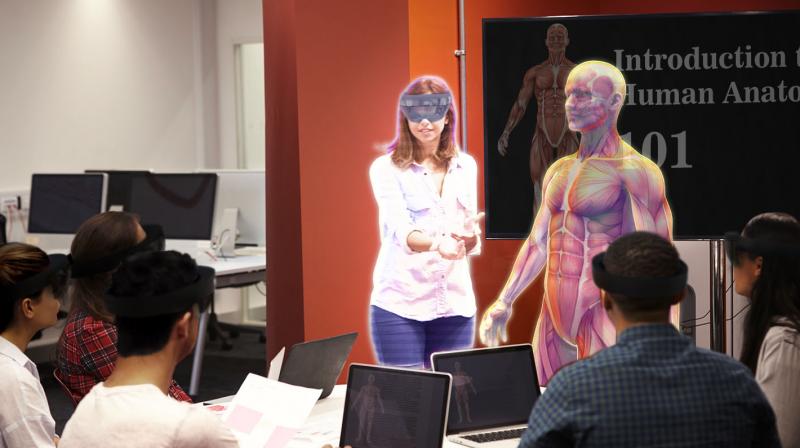Mumbai-based startup creates India's own AR headset

Since Microsoft’s Hololens AR headset rolled for the world to use a few years ago, augmented reality has gone viral with both the manufacturers and the consumers. AR is predicted to be the next big thing and is expected to revolutionise the way we use computers. However, predicting the future is one thing and working towards it to increase its accessibility requires pretty considerable efforts, especially when you consider the immense costs required to make it reach the common man in various fields. However, India is known for making affordable alternatives to expensive solutions and one startup from IIT Bombay has come up with an AR headset to promote this next generation of computing.
Indian startup Dimension NXG has come up with AjnaLens, which is claimed to be India’s first home-grown AR headset. The headset is currently under development but has already achieved lots of accolades, one of which is the Graham Bell innovation Award. It will be some time before AjnaLens makes it to the hands of users, but the company claims that it will help improving certain sectors such as automobile, aerospace, manufacturing, healthcare, architecture and many more. They already got few pre-orders from India & USA.
The AjnaLens basically displays holograms on the display, thus integrating AR objects with reality. Users will able to see virtual objects in 3D and interact with them in intuitive ways. AjnaLens will allow the user to interact with the AR objects using hand gestures, voice commands and gaze controls (which is next-gen cursor control technology). For example, users will able to interact with virtual furniture and adjust their size by pinching on the edges to adjust it to desired levels. With gaze controls, all you would need to navigate inside the interface is simply look at various UI elements.
On the hardware front, AjnaLens will come with the ability to ‘see the world’, i.e. it will scan the world in real-time using depth-sense technologies. The headset will be able to create a 3D map of the environment and measure AR elements accordingly to deliver the most realistic experience.
On top of that, the software will take into account the presence of Artificial Intelligence and will work to improve the experience over time. The team working on the graphics of the AR headset is ensuring that AR objects will not merely remain cartoon figures in the real world — all the AR objects will blend with the environment by using ambient light shades on them. The team will be working on the VFX to make it look more real, i.e. an AR car will have shadows on the other side when being viewed directly under the sunlight. The team is also working on realistic shaders to ensure the headset tries its best to blur the lines between all the realities.
Given the aims that AjnaLens is expected to achieve; we expect the headset to use some really potent hardware underneath. In the coming days, it will be challenging for the company to commercialise the product in a country obsessed with efficient economics, considering the advanced technology that has gone under its hood.
Therefore, it won’t be long before you will be having your personal JARVIS assistant at your disposal, telling you more about your surroundings than what your eyes can see. The future of technology is surely going to be exciting.

